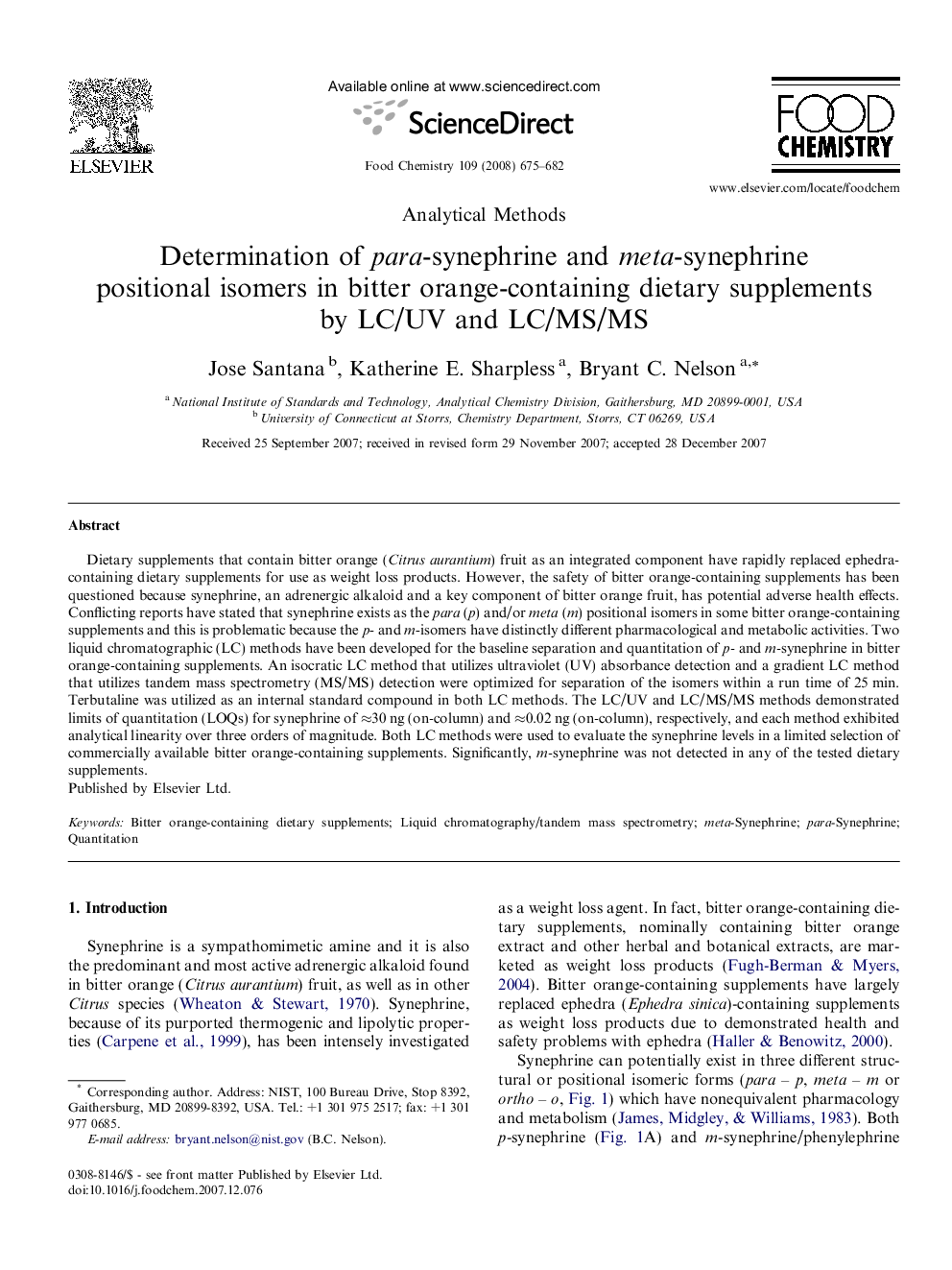| Article ID | Journal | Published Year | Pages | File Type |
|---|---|---|---|---|
| 1187083 | Food Chemistry | 2008 | 8 Pages |
Dietary supplements that contain bitter orange (Citrus aurantium) fruit as an integrated component have rapidly replaced ephedra-containing dietary supplements for use as weight loss products. However, the safety of bitter orange-containing supplements has been questioned because synephrine, an adrenergic alkaloid and a key component of bitter orange fruit, has potential adverse health effects. Conflicting reports have stated that synephrine exists as the para (p) and/or meta (m) positional isomers in some bitter orange-containing supplements and this is problematic because the p- and m-isomers have distinctly different pharmacological and metabolic activities. Two liquid chromatographic (LC) methods have been developed for the baseline separation and quantitation of p- and m-synephrine in bitter orange-containing supplements. An isocratic LC method that utilizes ultraviolet (UV) absorbance detection and a gradient LC method that utilizes tandem mass spectrometry (MS/MS) detection were optimized for separation of the isomers within a run time of 25 min. Terbutaline was utilized as an internal standard compound in both LC methods. The LC/UV and LC/MS/MS methods demonstrated limits of quantitation (LOQs) for synephrine of ≈30 ng (on-column) and ≈0.02 ng (on-column), respectively, and each method exhibited analytical linearity over three orders of magnitude. Both LC methods were used to evaluate the synephrine levels in a limited selection of commercially available bitter orange-containing supplements. Significantly, m-synephrine was not detected in any of the tested dietary supplements.
